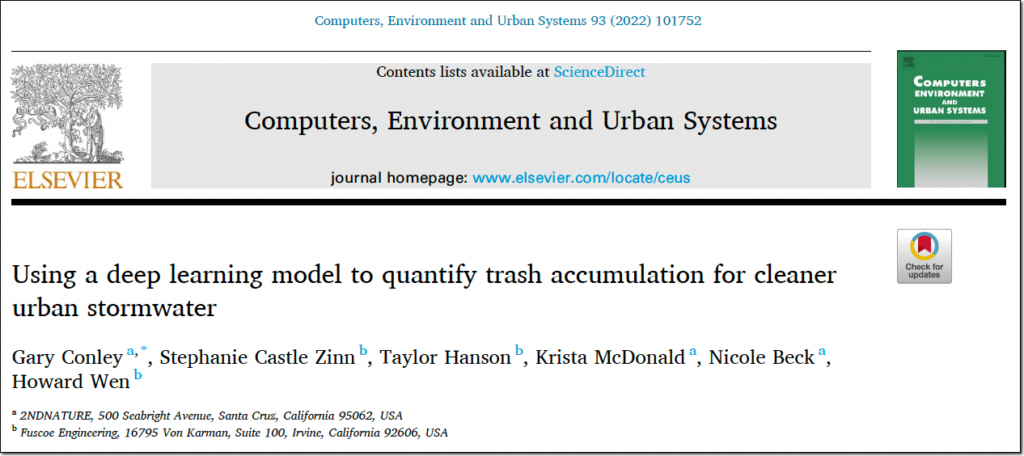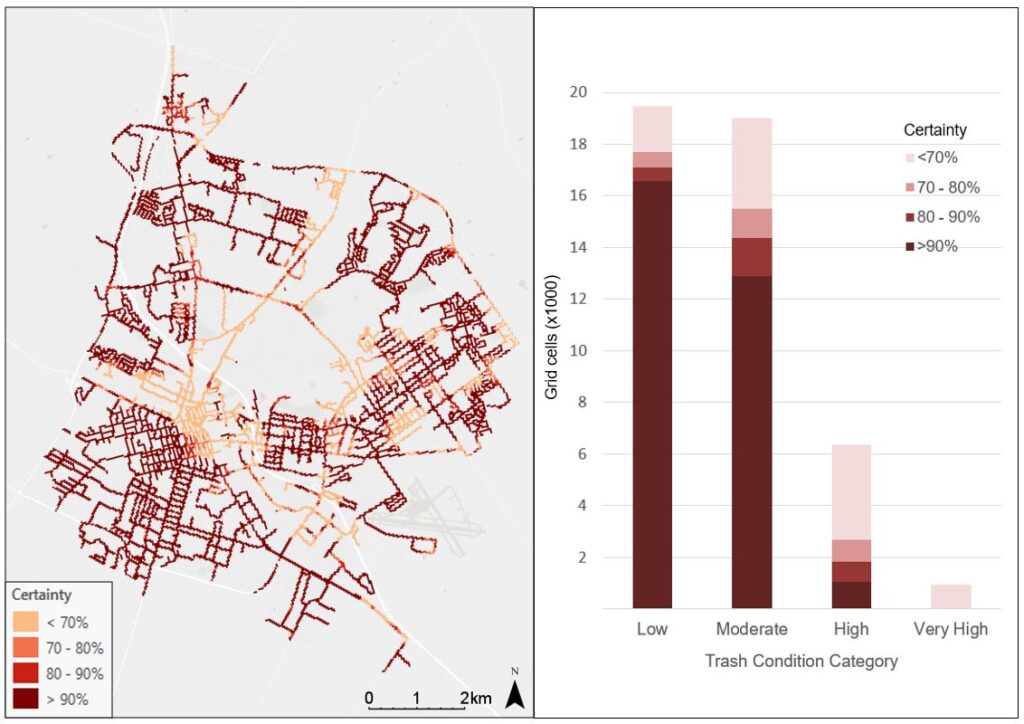In our quest for cleaner, healthier urban environments, the challenge of managing trash in our cities is a constant battle. But what if technology could turn the tide in this fight? This is where Gary Conley and the research team’s innovative research comes into play, offering a glimpse into a future where artificial intelligence (AI) leads the charge in keeping our streets clean.

The Heart of the Matter
At the core of this research and paper is a deep learning model – a sophisticated type of AI that’s adept at recognizing patterns and making predictions. This model is specifically designed to spot and quantify trash on city streets, a task that’s crucial for maintaining urban cleanliness and preventing pollution in our waterways.
How Does it Work?
Imagine vehicles equipped with cameras roaming the streets, capturing images of the urban landscape. These images are then fed into the AI model, which meticulously identifies and quantifies trash.
As the video plays, those red boxes you see indicate where the AI model detected trash and debris.
This approach is not just about spotting a soda can or a plastic bag here and there. It’s about creating a comprehensive map of trash accumulation in urban areas, which is vital for effective clean-up operations. A stormwater GIS, such as 2NFORM, uses this data to assist Stormwater Managers in adjusting their strategies and work efforts to protect critical assets.

Why is this Important?
This technology isn’t just about keeping streets looking tidy. It’s an essential tool with multiple benefits, extending far beyond aesthetics:
- Reducing local Flooding: The more trash and debris that accumulates in our curbs, the greater risk that debris can clog the nearest stormwater catch basin. With increasing intensity of rain storms pushing the capacity of local storm sewer systems, AI insights can drive a data-driven street sweeping program to strategically reduce the risk of localized flooding when it rains.
- Protecting Aquatic Habitats: When not managed properly, litter enters stormwater systems and eventually into rivers, lakes, and oceans. This AI-driven approach to trash management is crucial in preventing such pollution, thereby protecting aquatic life and preserving our water ecosystems.
- Cost Savings in Urban Maintenance: By accurately identifying areas that require cleaning, cities can allocate resources more efficiently. This targeted approach reduces unnecessary labor and equipment use, leading to significant cost savings in urban maintenance.
- Enhanced Public Health and Safety: Clean streets mean fewer hazards for pedestrians and vehicles. This technology helps in promptly addressing potentially dangerous debris, contributing to safer urban environments.
- Improved Data for Planning: The data collected by AI not only aids in immediate clean-up efforts but also provides valuable insights for future urban planning. Cities can identify hotspots for litter and implement preventative measures, leading to long-term improvements in urban cleanliness.
- Increased Public Engagement and Awareness: Maps of City. This data can inform public education and outreach efforts to rally support from the public and encourage community involvement in keeping neighborhoods clean.
The Results Speak for Themselves
The team’s research has not only proven successful but also illuminated how this data can be used by stormwater managers and sanitation crews:
- High Trash Detection Accuracy: After being trained with thousands of images, the AI model demonstrated remarkable precision in identifying various types of trash. This high level of accuracy ensures that clean-up efforts are not just general sweeps but focused actions targeting real problem areas.
- Comprehensive Understanding of Trash Accumulation: The detailed data provided by the AI model allows cities to gain a deeper understanding of trash patterns – where it accumulates, how much, and what types. This is crucial for creating more effective waste management strategies.
- Enhanced Responsiveness to Urban Cleanliness Needs: With real-time data, cities can respond more quickly to areas in need of immediate attention. This agility in response keeps the streets cleaner and prevents the escalation of minor issues into major ones.
- Benchmarking and Continuous Improvement: The results provide a benchmark for current urban cleanliness levels. Cities can use this information to set goals, track progress, and continually refine their urban maintenance and cleanliness approaches.
Conclusion
This research is a testament to the power of AI technology in solving real-world problems. By harnessing the capabilities of AI, we’re not just taking a step towards cleaner streets – we’re making a giant leap towards smarter, more sustainable urban living. This is just the beginning of a journey where technology and environmental stewardship go hand in hand, creating a brighter future for our cities and their inhabitants.


